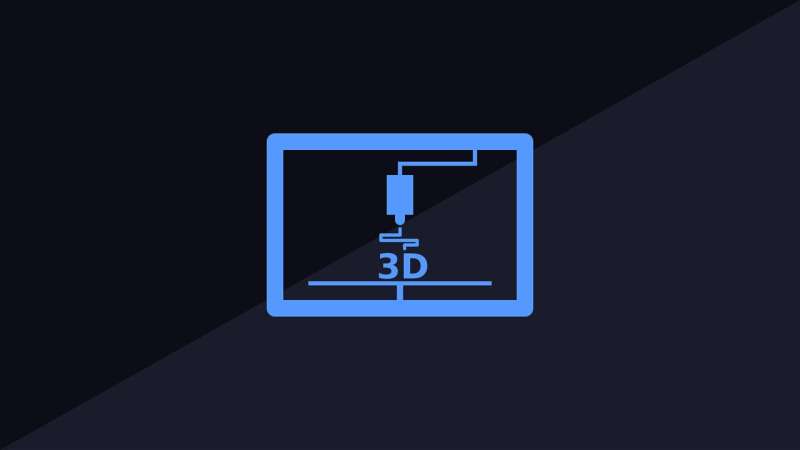Business advantages of customers using ‘personal fabrication’ in 3D printing revealed in new study

For years, the idea of a “3D business” only evoked images of 1950s theater patrons donning plastic goggles to watch a “stereoscopic” movie. Now the term is used more often to denote 3D printing that allows consumers to create their own items.
But a burgeoning offshoot of this technological breakthrough is called personal fabrication (PF), in which a firm sells product designs that let consumers customize and manufacture items using 3D printing services.
“With PF strategy, you do not have to mass produce things. You can sell the product design code and let customers personalize and print the products using 3D printing services,” said Nagarajan Sethuraman, assistant professor of business at the University of Kansas.
His new article, titled “Personal fabrication as an operational strategy: Value of delegating production to customer using 3D printing,” examines the benefits and drawbacks of this strategy, taking into consideration important factors such as personalization, postponement and design improvement. It appears in the journal Production & Operations Management.
“Typically, when a firm customizes the product and sells it to you, they’re going to charge for this customization. That’s where the value comes in,” said Sethuraman, who co-wrote the article with Ali Parlaktürk and Jayashankar Swaminathan of the University of North Carolina.
“For example, if you buy a Build-A-Bear at one of its stores, that’s a customized product, so you’re paying more. Think about the scenario here. The firm sells the product design to you. It implicitly allows you customization. But can the firm charge for the customization? That’s not so easy.”
Sethuraman notes his research hinges on how vertical and horizontal customization interacts with this new business model. Vertical refers to the quality and types of materials used. Horizontal refers to different sizes, shapes and colors.
“We find that extracting value from personal fabrication through vertical customization is very difficult, whereas extracting value from horizontal customization is very much a feasible thing,” he said.
Pointing to the items on his desk, Sethuraman illustrates the advantages to the 3D printing process in general.
“The key thing that’s big about 3D printing is you can make the shape of a (PowerPoint) clicker and change it over and take it out, and the next product can be a shape of a computer mouse,” he said. “There is negligible cost of the changeover as incurred in a typical manufacturing process. This is the key benefit: the flexibility.”
But PF does come with drawbacks. Sethuraman said 3D printing is slow.
“One of the major issues when it comes to mass production is you want things to move fast. The larger the product, the time that’s needed to produce exponentially increases. The second problem is sometimes the quality is a little unpredictable,” he said.
Sethuraman’s team used an economic modeling approach, specifically optimization and game theory to understand market dynamics. The researchers proposed a demand market model that captured customer heterogeneity in taste (horizontal) and quality (vertical) dimensions while allowing the market to be skewed with high versus low valuation customers.
Prior to earning a doctorate in operations management, Sethuraman had an extensive engineering background in which he worked on 3D printing and computational geometry. He’s been at KU for four years, where his areas of research focus on technology and innovation in supply chain management.
The professor has personally used 3D services quite often, Shapeways in particular. He’s had everything from jewelry to child’s toys created.
What’s the weirdest item he’s seen crafted through 3D technology?
He said, “Interestingly, people have printed a 3D printer itself.”
Despite the advances in this process, the days in which a “Star Trek”-style “replicator” that can create anything almost immediately may not be available any time soon.
“If you’re talking about a machine that can ‘print’ chicken soup, and then a computer mouse and then a shoe, we are really far from realizing that. But if you’re talking about one type of shoe, and another color of shoe and another geometry of shoe, we’re not too far. If we’re talking about making some sort of cake, then maybe another shape, color or design of cake, we’re very close,” he said.
In other words, you will be able to use a machine to make different kinds of shoes … but don’t expect that same machine to make a cake.
More information:
Nagarajan Sethuraman et al, Personal fabrication as an operational strategy: Value of delegating production to customer using 3D printing, Production and Operations Management (2023). DOI: 10.1111/poms.13981
Citation:
Business advantages of customers using ‘personal fabrication’ in 3D printing revealed in new study (2023, October 30)
retrieved 31 October 2023
from https://techxplore.com/news/2023-10-business-advantages-customers-personal-fabrication.html
This document is subject to copyright. Apart from any fair dealing for the purpose of private study or research, no
part may be reproduced without the written permission. The content is provided for information purposes only.
For all the latest Technology News Click Here
For the latest news and updates, follow us on Google News.

